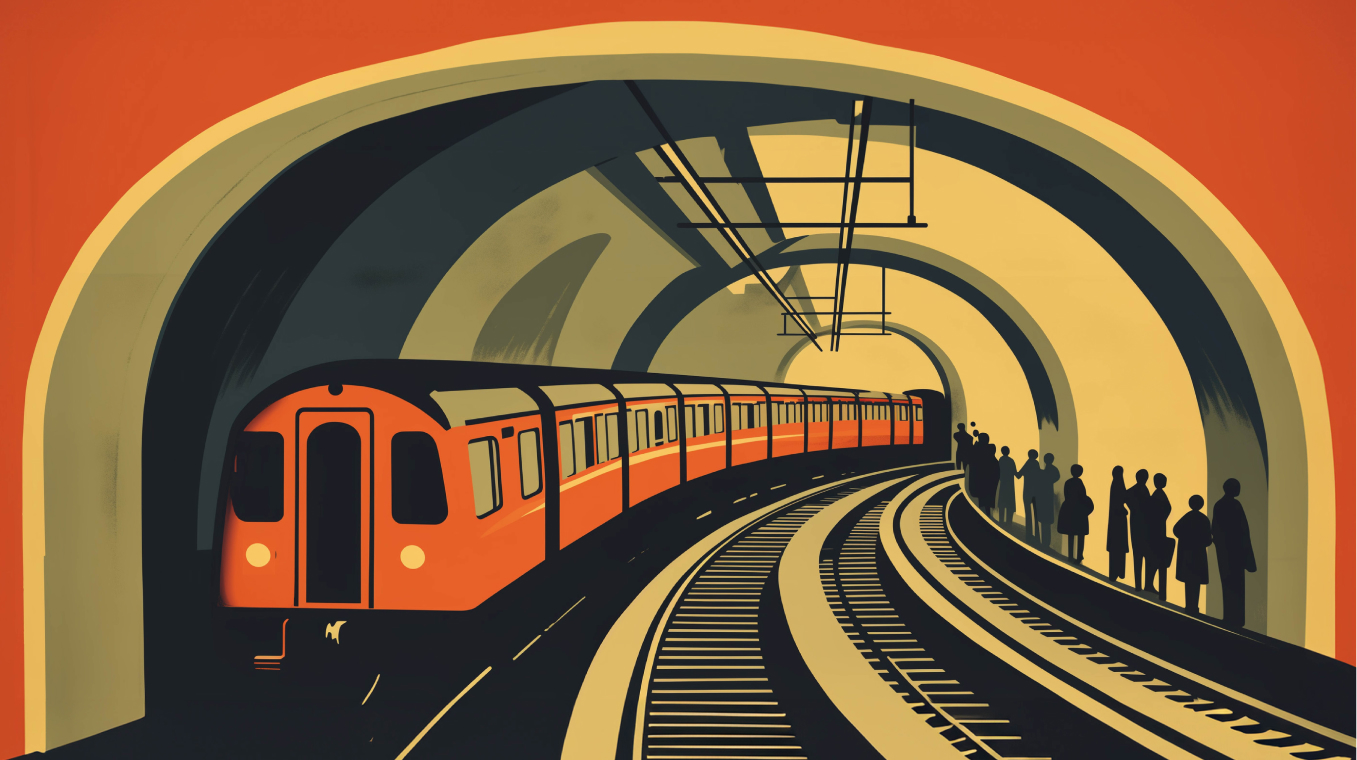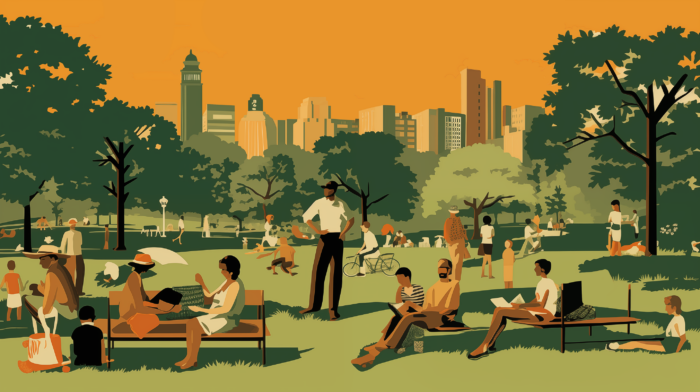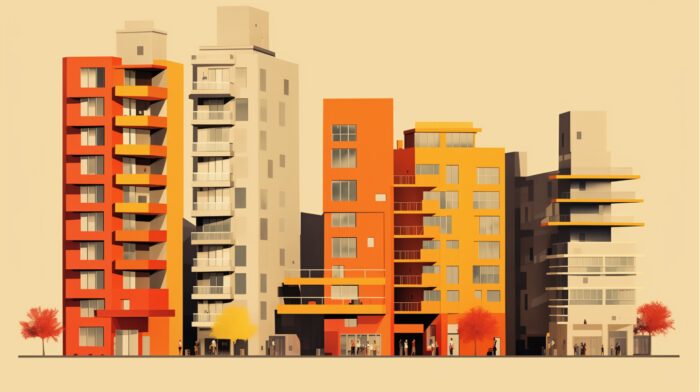If you have questions or want to learn more, please fill in the form or send us an email at:

Give Transit Agencies Control Over Zoning
Each summer, thousands of Americans take their summer holidays in European cities. After spending weeks navigating the continent’s cities without once getting behind the wheel of a car, Americans demur when asked why we can’t mimic similar designs here at home.
European cities were all built before the car was invented, they say, so naturally they’re designed to prioritize walking over driving. American cities, built for the car, just couldn’t support anything like Europe’s dense network of subways, buses and trolleys.
Nothing could be further from the truth. The difference between European cities and their American counterparts has very little to do with age and almost everything to do with the legal regimes and political institutions governing them. Though American cities are generally far richer than their European counterparts, they also limit density where it’s most in demand. Further, they often limit density near major transit stops and prime transit locations.
American transit systems are built to fail because the key ingredient for their success is outside their hands. Allowing transit agencies to have a stake in local zoning is an important first step in increasing ridership, financial solvency and reducing the amount of greenhouse gasses that flow from the tailpipes of American private automobiles.
It’s no secret that Europe’s major metro areas have train service that outdoes even America’s best public transit system, in New York City. The former Interborough Rapid Transit Company system—which was absorbed by the New York City Subway and became the numbered lines that run the length of Manhattan—has peak headways (a measure that can be used to describe how often trains arrive at a given station) of between 3-7 minutes or 2-4 minutes during the morning and evening rush hours. That’s almost on par with the Paris Métro’s most traveled Lines 1 and 4 which operate with 2 minute rush hour headways.
What might surprise some, however, is that far less prosperous and populated cities across Europe manage to keep pace with, and even outdo, New York City’s subway system—to say nothing of those in other American cities. Barcelona, whose system boasts an annual ridership of about 372 million despite a metropolitan area population of just 5.7 million—just under that of metro Miami—runs average peak time headways of about 3.5 minutes, according to the International Association of Public Transport. Kyiv, under the threat of Russian bombs since 2022, changed its off-peak time frequency from around 2 minutes to 6-7 minutes.


The difference between American cities and European cities that allows the latter to run service this frequently is density. At its most basic level, a mass transit line is only sustainable when the money it recovers from fares equals the amount spent to cover operating costs and the costs of construction. Though few agencies recover 100% of their costs, and most rely on the government to backfill the difference, adequate ridership is a prerequisite for frequent, reliable service.
As Christof Spieler put it in his highly informative 2018 book Trains, Buses, People: An Opinionated Atlas of US Transit: “A mile of route puts roughly a square mile of area within reach of transit. If 100 people live in that square mile, there are 100 potential transit riders; if 10,000 people live in that square, there are 10,000 potential transit riders.” Estimates for viable density to run such service ranges from “67 persons per acre for light rail to 119 persons per acre for heavy rail,” according to a report from the UCLA Lewis Center.
Looking at the population densities for America’s and the European Union’s 50 largest metropolitan areas, a clear pattern becomes evident. American metros, save for few exceptions, are dramatically less dense than their European counterparts. Moreover, the cities that anchor metropolitan areas in Europe are much denser than their American counterparts. For instance, Madrid, a city with roughly the same land mass as Chicago (about 234 mi2 for each), has a population of 3.3 million compared to Chicago’s 2.6 million. In addition to the central cities, the suburban and even exurban areas of European cities are far more dense than American metropolitan areas in which low-density sprawl development stretches for miles.

This is apparent when comparing the Paris and Houston metropolitan area (as users on r/fuckcars did last year). Though metropolitan Houston occupies about twice the land area of metropolitan Paris, it contains just over half the population. Trying to serve such a gigantic landmass with so few people in it would quickly lead a mass transit agency into bankruptcy. But quadruple the population and suddenly those inhabitants could be moved quickly and efficiently throughout this space without relying on private automobiles.

Many American cities have taken important first steps to augment the viability of their mass transit systems through increased density. Arlington, Virginia was an early adopter of “Transit Oriented Development”, which rezones areas near existing or upcoming mass transit nodes for higher density. These changes allowed them to concentrate new housing production and thus population growth near the DC Metro’s Orange Line that runs into Washington, D.C. where most Arlington residents work.
As a result, the region has built about 45,000 new multifamily units and expanded its population by about 60,000 over a 50 year period, all without growing the urban footprint. A similar program in Los Angeles called “Transit Oriented Communities” provides density bonuses and parking-minimum reductions for developers building near mass transit who also include subsidized housing for low-income individuals as part of their proposals. Since its inception in 2018, about 50,000 new housing units have been proposed through the program—about a third of all new units proposed in LA over that same time period.
Policymakers must come to terms with the fact that land use rules determine the viability of mass transit. Unfortunately, successful transit oriented development projects like those described above are more an anomaly than the rule; vast swaths of prime land near mass transit go underutilized as surface parking lots or single family homes. However, there are tools that government at all layers of our federal system could employ to both build more homes and reduce America’s abnormally high usage of private automobiles compared to other advanced economies.
Local governments could turn to federal money to acquire underutilized land near either existing or planned mass transit corridors for later redevelopment—especially for development of subsidized low-income housing units. But beyond just redeveloping underutilized land near new rail stations, local governments might consider Hong Kong’s “Rail + Property” model. Under that system, transit agencies give private developers rights to build near a station in exchange for a share of their profits. This increases density near transit stops while also creating a valuable new revenue stream that can be used to increase service frequency or expand the mass transit network.
Alternatively, as California attempted twice in recent years, state governments could tie upzonings automatically to mass transit proximity. Senate Bill 827, introduced in 2018, would have removed height and density limits for cities across the state based on proximity to high-frequency transit stops. Though SB 827 and its successor, SB 50, were defeated in the California Legislature, a bill removing parking requirements for new housing near mass transit was signed into law in 2022. While it’s too soon to assess the impact of that bill, past reforms that lowered minimum parking requirements yielded a boom in new housing construction.
Given the scale and urgency of both the housing crisis and the climate crisis, more radical steps could be taken. Zoning in the United States has been the dominion of local governments since the 1926 Euclid v. Ambler decision, but the 10th Amendment of the U.S. Constitution actually gives this power to the states. As such, there’s no reason why state government cannot vest another, less parochial, layer of government with this authority.
Transit agencies, often responsible for services that cross several city and county boundaries in a given metropolitan area, would be ideal candidates—especially if they were to consolidate across regions as some have proposed.
In most American states, municipalities get zoning jurisdiction over land within their boundaries, but this is by no means universal. States vary on how much land use authority they cede to local governments and how involved they are in reviewing those decisions. There is nothing stopping states from giving transit agencies a “first crack” at updating zoning maps and then forcing local governments to issue permits by-right based on those maps.
Empowering transit agencies to do this would split the difference between totally abolishing zoning laws and letting elected officials retain some control of the process. Most transit agencies are governed by a board of directors ypically consists of elected officials from the cities and counties within its service area. This allows for elected officials to still be involved in zoning while overcoming the atomized and parochial nature of the status quo. In parts of the country where transit agencies are not yet consolidated across cities, Metropolitan Planning Organizations might take on this role.
Importantly, giving zoning authority to transit agencies would allow for land use decisions to be tied to metrics such as ridership or changes in Vehicle Miles Traveled. Further, transit agencies could streamline expansions of service by ensuring sufficient density along planned expansion routes that would make these routes viable. Objective metrics with real-world impacts on both the environment and people’s lives would be immensely preferable to our current “vibes-based” approach.
Of course, America’s low density, sprawl development patterns are not the only reason why our mass transit service lags so far behind our European counterparts. But without density, efficient mass transit service is simply unviable. About 80 years ago, large swaths of American cities were razed to the ground to lay the foundations for auto-dependence. Luckily, reversing this trend requires a much less violent and disruptive solution: Simply let people build.



